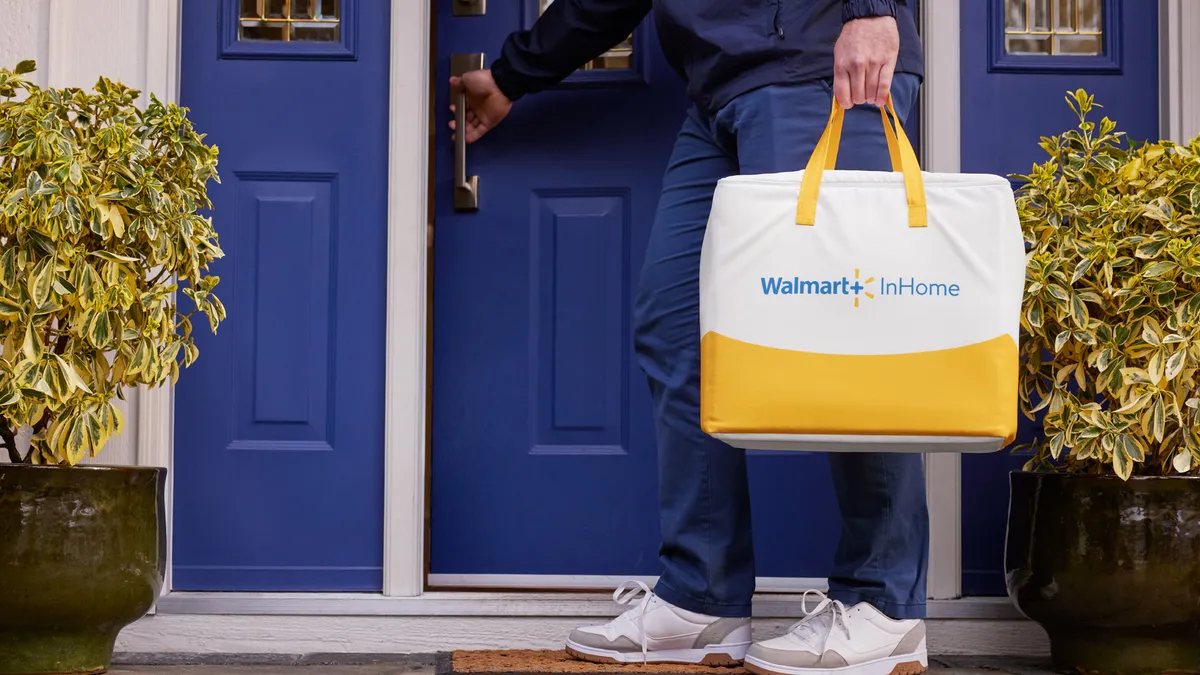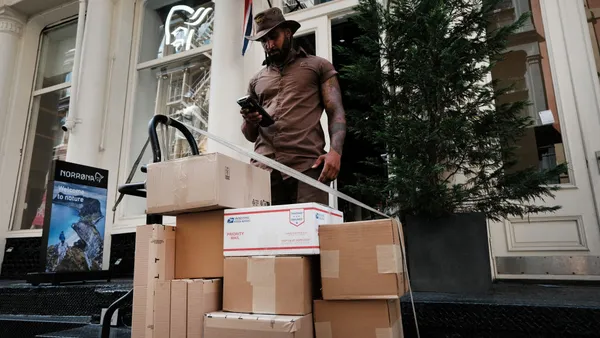Dive Brief:
- Walmart has lowered the cost of making last-mile deliveries from its stores to customers' homes by about 20% over the past year, EVP and CFO John David Rainey said on an earnings call last week.
- That's up from the 15% reduction in store-to-home delivery costs reported by the retail giant in November. Rainey credited the improvements in part to increasing active e-commerce customers, with Walmart "densifying the last mile" by delivering more packages per route.
- "As we have more customers coming to us, using us through e-commerce channels, it enables us to spread that cost of delivery over multiple customers," Rainey said.
Dive Insight:
The unit economics surrounding Walmart's last-mile delivery operations have improved as it grows its online shopper base and, consequently, order volume from its stores.
Store-fulfilled delivery sales jumped 50% in Q4, with the company reaching a $2 billion monthly run rate in the category, according to Rainey.
"Delivery has been a key source of share gains among upper income households and is also the most productive channel for acquiring Walmart+ members," Rainey said.
Beyond increasing delivery volume from its sizable brick-and-mortar footprint, Walmart is also making the order distribution process more efficient to lower costs.
Last year, Walmart began adding parcel stations to its stores to improve last-mile delivery efficiency. These stations, described as mini post offices, receive packages from company fulfillment centers. The items stored are then delivered to customers' homes via independent contractors on the company's Spark Driver platform or third-party carriers.
"For customers, parcel stations give them more time to place online orders on a greater assortment of merchandise for Next Day Delivery," Jennifer McKeehan, SVP of transportation and delivery for Walmart U.S., said in a company blog post. "For associates, we’re making it easier and more efficient to distribute online orders from stores."
Implementing more automation into its fulfillment and distribution facilities will also help Walmart further improve its unit economics around delivery, Rainey said on a separate investor call last week. The company has installed its latest automation technology in five of its 31 fulfillment centers, according to the CFO.
"When we automate one of these [fulfillment centers], we see that they can have twice the capacity and twice the throughput of an existing FC in that same footprint," Rainey said. "And so this is a tremendous benefit for us in terms of the efficiency that we achieve by delivering packages to customers."














